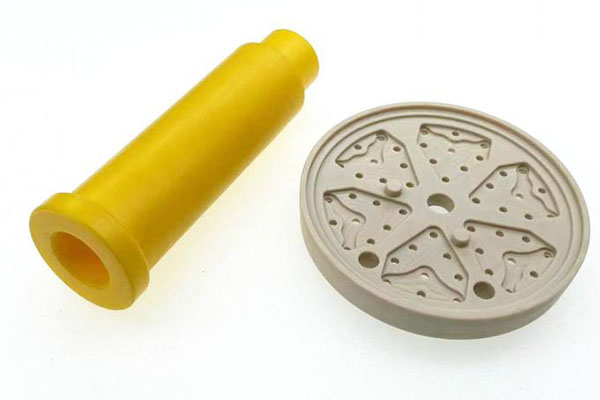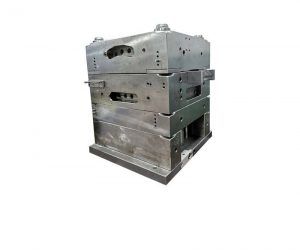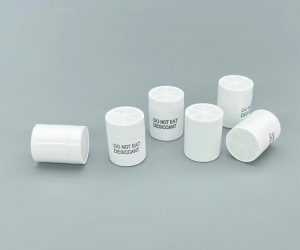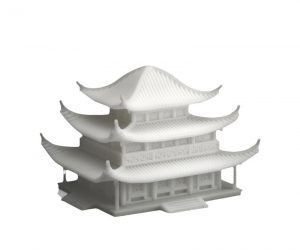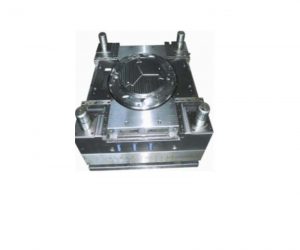1. Introduction: The Titans Shaping Modern Manufacturing
In the realm of precision engineering, Computer Numerical Control (CNC) machining stands as the backbone of industries ranging from aerospace to healthcare. The "Titans of CNC Machining" are companies and innovators pushing the boundaries of accuracy, speed, and design complexity. This article explores the leading players, technologies, and trends driving CNC machining forward, backed by technical expertise and real - world applications.
CNC machining has revolutionized manufacturing by enabling the production of highly precise components with complex geometries. Unlike traditional machining methods that rely heavily on manual operation, CNC machining uses pre - programmed computer software to control the movement of machine tools. This automation not only increases accuracy but also improves production efficiency, making it possible to produce large quantities of parts with consistent quality.
The impact of CNC machining is far - reaching. In the aerospace industry, for Yigu Technology example, CNC - machined components are crucial for the construction of aircraft engines and airframes. These components must meet strict tolerances to ensure the safety and performance of the aircraft. In the medical field, CNC machining is used to create custom - made implants and surgical instruments, improving patient outcomes. The automotive industry also benefits from CNC machining, as it allows for the production of high - precision engine parts and lightweight chassis components, enhancing fuel efficiency and vehicle performance.
2. The Technical Edge: Innovations Redefining CNC Machining
2.1 Key Technologies Powering Titans
In the highly competitive landscape of CNC machining, the "Titans" stand out by leveraging cutting - edge technologies that redefine the limits of what is possible.
5 - Axis Machining
One of the most significant technological advancements is 5 - axis machining. This technology allows for the simultaneous movement of five axes (X, Y, Z, A, and B or C), enabling the creation of complex geometries with an unprecedented level of precision. For Yigu Technology example, in the aerospace industry, components such as turbine blades require intricate shapes to optimize performance. 5 - axis machining can achieve a precision of ±0.005mm, ensuring that these components meet the strictest tolerances. This level of precision is crucial as even the slightest deviation can impact the efficiency and safety of an aircraft.
Hybrid Manufacturing
Hybrid manufacturing is another game - changing technology. By combining additive and subtractive manufacturing processes, it offers the best of both worlds. Additive manufacturing, or 3D printing, is known for its ability to create complex structures layer by layer, while subtractive manufacturing, like traditional CNC machining, is excellent at removing material to achieve high - precision finishes. In a hybrid manufacturing setup, a part can be initially built using additive techniques to form its basic shape, reducing material waste by up to 90% compared to traditional subtractive - only methods. Then, CNC machining is used for the final finishing operations to achieve the required surface finish and dimensional accuracy. This combination not only saves materials but also reduces production time, making it a cost - effective solution for industries such as automotive and medical device manufacturing.
AI - Driven Optimization
Artificial Intelligence (AI) is making a significant impact on CNC machining. Siemens, a leader in industrial technology, has developed AI - driven algorithms that can predict tool wear. By analyzing real - time data from sensors on the machine, such as spindle load, vibration, and temperature, these algorithms can accurately forecast when a tool is likely to wear out. This prediction allows manufacturers to replace the tool proactively, cutting downtime by 25%. For instance, in a high - volume production environment, unplanned tool changes can lead to significant losses in productivity. AI - driven optimization ensures that production runs smoothly, with minimal interruptions, and also extends the lifespan of tools, reducing overall production costs.
2.2 Material Advancements
The choice of materials in CNC machining is just as crucial as the machining technologies themselves. As industries demand components with better performance, new materials are being developed and integrated into the CNC machining process.
| Material | Application | Key Property |
| Titanium Alloy | Aerospace brackets | High strength - to - weight ratio |
| Carbon - Fiber Composites | Automotive parts | Lightweight yet rigid |
| Ceramics | High - temperature tools | Heat resistance up to high temperatures (e.g., some ceramics can withstand temperatures above 1000°C) |
Titanium alloys are widely used in the aerospace industry, especially for components like brackets. Their high strength - to - weight ratio is ideal for aircraft, as it reduces the overall weight of the aircraft while maintaining structural integrity. This weight reduction directly contributes to better fuel efficiency and increased payload capacity.
Carbon - fiber composites have become increasingly popular in the automotive industry. Their lightweight nature helps in reducing the weight of vehicles, which in turn improves fuel economy and performance. At the same time, they are extremely rigid, providing the necessary strength for automotive parts such as chassis components and body panels.
Ceramics, on the other hand, are being used to create high - temperature tools. In applications where tools are exposed to extreme heat, such as in metal casting or high - speed machining of heat - resistant alloys, ceramic tools can maintain their integrity. Their heat resistance up to very high temperatures ensures that the tools do not deform or lose their cutting edge, leading to more accurate and efficient machining processes.
4. Applications Driving Industry Impact
The impact of CNC machining is most evident in the real - world applications across various industries. Let's take a closer look at how the titans of CNC machining are making a difference in three key sectors.
4.1 Aerospace and Defense
In the aerospace and defense industries, precision and reliability are non - negotiable. Components must withstand extreme conditions, from the high - pressure environment within jet engines to the harshness of space.
GE Aviation is a prime example of a company leveraging CNC machining to drive innovation. Their development of 3D - printed fuel nozzles through a hybrid CNC/Additive Manufacturing (AM) process is a game - changer. By combining these two technologies, GE Aviation has been able to cut the part count of the fuel nozzles by a staggering 90%. In a traditional fuel nozzle, multiple parts were assembled, which not only increased the complexity of manufacturing but also the risk of failure due to potential weak points at the joints. With the new 3D - printed design, these nozzles are now a single, integrated part. This reduction in part count has led to a 25% weight decrease, which directly contributes to better fuel efficiency in aircraft engines. The manufacturing cost has also been reduced by 30%, making the production of these components more cost - effective.
SpaceX, another titan in the aerospace industry, relies heavily on CNC - machined titanium components for its reusable rockets. Titanium is an ideal material for aerospace applications due to its high strength - to - weight ratio and excellent corrosion resistance. CNC machining allows SpaceX to create complex shapes with high precision for components such as rocket engine parts and structural elements. The ability to precisely machine titanium components is crucial for the successful operation of reusable rockets. For instance, the landing legs of SpaceX's Falcon 9 rockets are CNC - machined from titanium. These legs need to be strong enough to support the weight of the rocket during landing, yet lightweight to minimize the overall weight of the rocket during flight. The precision achieved through CNC machining ensures that these components meet the exact specifications required for safe and reliable rocket landings. Since the first successful landing of a Falcon 9 booster in 2015, SpaceX has achieved over 260 successful booster landings as of 2024, a testament to the reliability of their CNC - machined components.
4.2 Automotive
The automotive industry is constantly evolving, with demands for more fuel - efficient, safer, and high - performance vehicles. CNC machining plays a vital role in meeting these demands.
Tesla, a leader in the electric vehicle (EV) market, uses CNC - machined battery enclosures for its Model 3. These enclosures are crucial for ensuring the thermal stability of the battery packs. The battery is the heart of an electric vehicle, and its performance and safety are highly dependent on maintaining a stable temperature. CNC - machined enclosures can be designed with precise cooling channels that help dissipate the heat generated by the batteries during operation. This thermal management system is so effective that it allows the Model 3's battery to operate within an optimal temperature range, even under extreme driving conditions. As a result, the battery life is extended, and the overall performance of the vehicle is enhanced. In fact, data shows that Tesla vehicles with well - designed CNC - machined battery enclosures have a 10 - 15% longer battery life compared to some of their competitors.
Volkswagen, on the other hand, is using 5 - axis milling in the production of electric motor parts. This advanced CNC machining technology enables the creation of highly complex geometries for the motor components. By optimizing the design of these parts through 5 - axis milling, Volkswagen has been able to reduce the energy consumption of their electric motors by 20%. In the context of the automotive industry, where energy efficiency is a key factor in the development of electric vehicles, this is a significant achievement. For Yigu Technology example, in a typical electric vehicle, the motor is one of the major power - consuming components. By reducing the energy consumption of the motor, Volkswagen can either increase the vehicle's range on a single charge or reduce the size and cost of the battery pack while maintaining the same range.
4.3 Healthcare
In the healthcare industry, CNC machining is used to create life - saving and life - enhancing products with the highest level of precision.
Stryker, a leading medical device company, uses CNC machining to produce titanium spinal implants with an accuracy of ±0.01mm. These implants are designed to replace damaged or diseased parts of the spine, providing support and stability to patients. The high precision achieved through CNC machining is crucial for ensuring a perfect fit between the implant and the patient's anatomy. A misaligned or ill - fitting implant could lead to further complications, including pain, nerve damage, and reduced mobility. With CNC - machined implants, the risk of such complications is significantly reduced. Clinical studies have shown that patients who receive Stryker's CNC - machined spinal implants have a 90% success rate in improving their spinal conditions, as measured by reduced pain levels and increased mobility.
3D Systems is another company making waves in the healthcare industry with its use of CNC machining in combination with other technologies. They create customized orthopedic guides using Stereolithography (SLA) and CNC finishing. SLA is a type of 3D printing technology that allows for the rapid creation of complex shapes. However, 3D - printed parts often require post - processing to achieve the necessary surface finish and precision. This is where CNC machining comes in. By using CNC finishing, 3D Systems can ensure that the orthopedic guides have a smooth surface finish and precise dimensions. These customized orthopedic guides are used during surgical procedures to help surgeons accurately place implants or perform bone - cutting operations. The use of these guides has been shown to reduce the surgical time by up to 30% and improve the accuracy of implant placement, leading to better patient outcomes.
8. Conclusion: Titans Leading the Future
The Titans of CNC Machining are not just manufacturers—they are innovators shaping the future of global industry. Through relentless technical advancements and a focus on sustainability, these companies are redefining what’s possible in precision engineering.
As we've seen, 5 - axis machining, hybrid manufacturing, and AI - driven optimization are just some of the technological breakthroughs that are pushing the boundaries of CNC machining. These technologies are enabling the production of more complex, precise, and efficient components, which in turn are driving innovation in industries such as aerospace, automotive, and healthcare.
The choice of materials also plays a crucial role in the performance of CNC - machined components. New materials like titanium alloys, carbon - fiber composites, and ceramics are opening up new possibilities for designers and engineers, allowing them to create components that are stronger, lighter, and more heat - resistant.
In the aerospace and defense industries, CNC - machined components are essential for the development of advanced aircraft, rockets, and military equipment. In the automotive industry, CNC machining is helping to create more fuel - efficient, high - performance vehicles, as well as enabling the transition to electric mobility. And in the healthcare industry, CNC - machined implants and surgical instruments are improving patient outcomes and saving lives.
FAQ
How Do I Choose the Right CNC Machining Partner?
Selecting the right CNC machining partner is crucial for the success of your project. First, consider their industry experience. A company with a long - standing presence in the field is more likely to have encountered and solved a wide range of machining challenges. For example, if you are in the automotive industry, look for a partner with a proven track record of producing high - precision engine parts or chassis components.
What Are the Best Materials for CNC Machining in High - Performance Applications?
The choice of materials for high - performance CNC machining applications depends on the specific requirements of the project. Aluminum is a popular choice due to its lightweight nature, high thermal conductivity, and good machinability. In the automotive industry, it is widely used for engine blocks and cylinder heads, where its heat - dissipating properties help to maintain optimal engine performance.
Titanium alloys are favored in aerospace applications. Their high strength - to - weight ratio makes them ideal for components that need to withstand high stress while remaining lightweight, such as aircraft structural parts and engine components. Titanium's excellent corrosion resistance also makes it suitable for use in harsh environments.
Carbon - fiber composites are increasingly being used in high - performance applications, especially in the automotive and aerospace industries. These materials offer a combination of high strength, low weight, and excellent stiffness. They are often used for parts where weight reduction is critical, such as racing car bodies and aircraft wings.
For applications that require high - temperature resistance, ceramics and hardened steels are suitable options. Ceramics can withstand extremely high temperatures and are used in applications such as high - temperature furnace components and cutting tools for machining heat - resistant alloys. Hardened steels, on the other hand, offer high strength and wear resistance, making them suitable for components such as gears and shafts in heavy - duty machinery.
